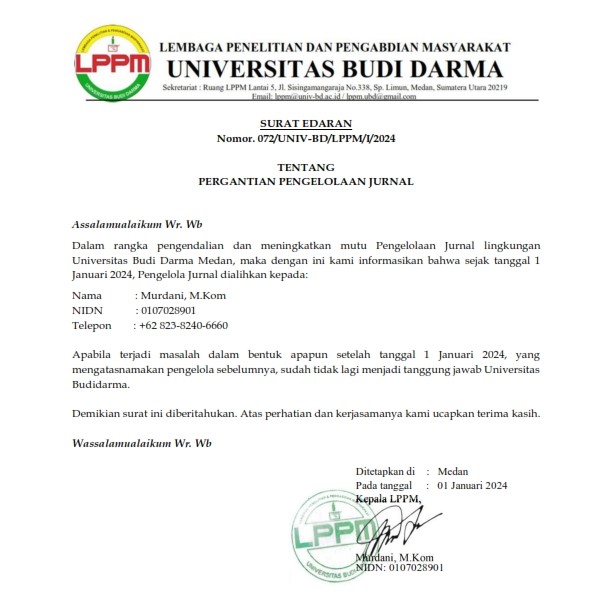Evaluating Village-owned Enterprises and SMEs Businesses Engagement Through Web Application Using System-Usability Scale
DOI:
https://doi.org/10.30865/jurikom.v9i6.5035Keywords:
Digital Technology, Rural Communities, SMEs, Village-owned Enterprise, SUSAbstract
Village-owned enterprises (BUMDesa) and Small and Medium Enterprises (SMEs) are enabled to strengthen the rural economy. The two entities shall collaborate and will help the rural economy become more adaptive and sustainable. One approach to collaborate is using digital technology, such as web applications. It will allow businesses to survive by gaining potential networking and cross-border markets through online marketing. This collaboration can be done using a digital technology approach where both roles are needed to improve the village economy. If this technological approach is not implemented, then marketing will be limited so that it will have an impact on the village economy. The qualitative and scrum approach is used to develop the digital web. The result shows differences between BUMDesa and SMEs' roles toward the web application. BUMDesa can make better managerial through digital businesses so that BUMDesa can accelerate SMEs' productivity by opening new markets and business perspectives to SMEs. The testing process is carried out to prevent the failure of website development by implementing a usability test, namely the Usability Scale (SUS) System. The tests carried out show that the proposed design gets a good score of 69.63, so it is effective and efficient to be implemented in website development. SMEs can gain a broader market, improve their production standard, and add production capacities. The collaboration will map and profile their strengths and weaknesses to minimize the implementation gap. In addition, the BUMDesa and SMEs will invest in social capital, which means the ability to establish cooperation, trust, and participation, in the local community to benefit from the social network. It will improve innovation capability
References
A. Maulana, H. Akib, M. Nuryamin, S. Saleh, and M. Rizal, “The Role of Village-Owned Business Agencies ( BUMDes ) in Community Empowernment In Ujung Village , Lappariaja District , Bone District,†J. Ilm. Ilmu Adm. dan Manaj., vol. 15, no. 1, 2021.
H. Sofyani, R. Atmaja, and S. B. Rezki, “Success Factors of Village-Owned Enterprises (BUMDes) Performance in Indonesia: An Exploratory Study,†J. Account. Invest., vol. 20, no. 2, 2019, doi: 10.18196/jai.2002116.
R. Andreswari, N. Ambarsari, A. Syahrina, W. Puspitasari, A. Novianti, and I. Darmawan, “Design of e-Marketplace for Village-owned Small, Micro and Medium Enterprise using Rapid Application Development,†Int. J. Innov. Enterp. Syst., vol. 4, no. 01, pp. 35–43, 2020, doi: 10.25124/ijies.v4i01.46.
M. Reza, F. Romadlon, A. Y. Pratama, and A. Sabrina, “Affirming logistics activities toward minimizing waste in marine products based on omen role in Tegal, Indonesia,†Int. J. Soc. Sci. Econ. Art, vol. 12, no. 2, pp. 67–72, 2022, doi: 10.35335/ijosea.v12i2.85.
J. Soluk, N. Kammerlander, and S. Darwin, “Digital entrepreneurship in developing countries: The role of institutional voids,†Technol. Forecast. Soc. Change, vol. 170, no. 2021, p. 120876, 2021, doi: 10.1016/j.techfore.2021.120876.
A. Oktarina and F. E. Nababan, “Strengthening Village Economy during Pandemic,†vol. 510, no. Icosaps, pp. 495–500, 2020, doi: 10.2991/assehr.k.201219.075.
L. Philip and F. Williams, “Remote rural home based businesses and digital inequalities: Understanding needs and expectations in a digitally underserved community,†J. Rural Stud., vol. 68, no. September 2018, pp. 306–318, 2019, doi: 10.1016/j.jrurstud.2018.09.011.
R. F. Christi, D. J. Diwest, and W. Wimala, “Optimalisasi Kegiatan Kewirausahaan dalam Rangka Peningkatan UMKM, BUMDes, dan Koperasi di Wilayah Desa Cijeungjing Kecamatan Jatigede Kabupaten Sumedang Provinsi Jawa Barat,†E-dimas (Education-Pengabdian Masyarakat), vol. 13, no. 2, pp. 375–381, 2022.
V. Aulia Rahmi, H. Ismanto, and M. Zainuddin Fathoni, “Inovatif Saat Pandemi Covid Melalui Pelatihan Kewirausahaan Khas Perempuan Berbahan Sampah ‘Kolaborasi BUMDes dan Warga,’†Din. J. Pengabdi. Kpd. Masy., vol. 4, no. 3, pp. 418–425, 2020, doi: 10.31849/dinamisia.v4i3.4632.
T. Ridwan et al., “Potensi UMKM dalam Penguatan BUMDES Desa Cempaka dengan Pendekatan ABCD di Era Pandemi COVID-19,†COMSERVA Indones. J. Community Serv. Dev., vol. 1, no. 4, pp. 150–158, 2021, doi: 10.36418/comserva.v1i4.20.
M. Rachmawati, T. H. Widagdo, A. E. Budiyanto, B. A. Indarto, and Sudiyono, “Pemberdayaan UMKM Melalui Pendekatan Media Sosial Di Desa Udanwuh Kabupaten Semarang,†Bakti Hum., vol. 2, no. 1, pp. 23–28, 2022.
R. Mudjiyanti, N. Tubastuvi, R. Pramurindra, S. Budiningsih, and M. P. Aji, “Pengembangan Potensi Usaha Masyarakat Untuk Mewujudkan Kemandirian Ekonomi Melalui Transformasi Digital di Desa Sambirata, Kecamatan Cilongok, Kabupaten Banyumas,†J. Econ. Soc. Empower., vol. 1, no. 02, pp. 69–74, 2021.
H. Sulistyo and Siyamtinah, “Innovation capability of SMEs through entrepreneurship, marketing capability, relational capital and empowerment,†Asia Pacific Manag. Rev., vol. 21, no. 4, pp. 196–203, 2016, doi: 10.1016/j.apmrv.2016.02.002.
M. B. Miles, A. M. Huberman, and J. Saldana, Qualitative Data Analysis: A Methods Sourcebook. SAGE Publications, 2019.
K. Bhavsar, V. Shah, and D. S. Gopalan, “Scrum: An Agile Process Reengineering In Software Engineering,†Int. J. Innov. Technol. Explor. Eng., vol. 9, no. 3, pp. 840–848, 2020, doi: 10.35940/ijitee.c8545.019320.
K. D. Prasetya, Suharjito, and D. Pratama, “Effectiveness Analysis of Distributed Scrum Model Compared to Waterfall approach in Third-Party Application Development,†Procedia Comput. Sci., vol. 179, no. 2019, pp. 103–111, 2021, doi: 10.1016/j.procs.2020.12.014.
S. S. Tirumala, S. Ali, and A. Babu, “A Hybrid Agile model using SCRUM and Feature Driven Development,†Int. J. Comput. Appl., vol. 156, no. 5, pp. 1–5, 2016, doi: 10.5120/ijca2016912443.
F. G. Sembodo, G. F. Fitriana, and N. A. Prasetyo, “Evaluasi Usability Website Shopee Menggunakan System Usability Scale (SUS),†J. Appl. Informatics Comput., vol. 5, no. 2, pp. 146–150, 2021, [Online]. Available: https://jurnal.polibatam.ac.id/index.php/JAIC/article/view/3293.
I. Maryati, E. I. Nugroho, and Z. O. Indrasanti, “Analisis Usability pada Situs Perpustakaan UC dengan Menggunakan System Usability Scale,†J. Media Inform. Budidarma, vol. 6, no. 1, p. 362, 2022, doi: 10.30865/mib.v6i1.3472.
J. Brooke, “SUS: A ‘Quick and Dirty’ Usability Scale,†1995. doi: 10.1201/9781498710411-35.
A. L. Yuliati and C. I. Setiawati, “Quality Analysis of Shopee Website by Using Importance Performance Analysis Approach,†no. January 2019, 2019, doi: 10.2991/icebef-18.2019.125.
Suyanto and U. Ependi, “PENGUJIAN USABILITY DENGAN TEKNIK SYSTEM USABILITY SCALE,†vol. 19, no. 1, pp. 62–69, 2019.
T. S. Tullis and J. N. Stetson, “A Comparison of Questionnaires for Assessing Website Usability ABSTRACT : Introduction,†Usability Prof. Assoc. Conf., no. June 2006, pp. 1–12, 2004.
A. P. Sari, “Strategy of Village Owned Enterprises in Realizing Independent Villages Strategi Badan Usaha Milik Desa dalam Mewujudkan Desa Mandiri Pendahuluan Metode Penelitian,†vol. 13, pp. 6–10, 2022.
L. Olmedo, M. van Twuijver, and M. O’Shaughnessy, “Rurality as context for innovative responses to social challenges – The role of rural social enterprises,†J. Rural Stud., no. April, 2021, doi: 10.1016/j.jrurstud.2021.04.020.
P. Tiwasing, B. Clark, and M. Gkartzios, “How can rural businesses thrive in the digital economy? A UK perspective,†Heliyon, vol. 8, no. July, p. e10745, 2022, doi: 10.1016/j.heliyon.2022.e10745.
H. Hairuddin, N. L. M. Noor, and A. M. A. Malik, “Why do Microenterprise Refuse to Use Information Technology: A Case of Batik Microenterprises in Malaysia,†Procedia - Soc. Behav. Sci., vol. 57, pp. 494–502, 2012, doi: 10.1016/j.sbspro.2012.09.1216.
P. C. Verhoef and T. H. A. Bijmolt, “Marketing perspectives on digital business models: A framework and overview of the special issue,†Int. J. Res. Mark., vol. 36, no. 3, pp. 341–349, 2019, doi: 10.1016/j.ijresmar.2019.08.001.
Y. . Basri, H. Yasni, A.-A. A, R. . Hanif, and R. Abdurrahman, “Human Capital, Social Capital, And Innovation Capability In Performance Of Village-Owned Enterprises,†J. ASET (Akuntansi Riset), vol. 13, no. 2, pp. 314–330, 2021.








